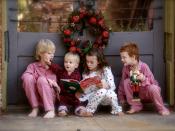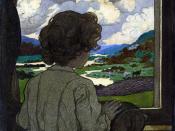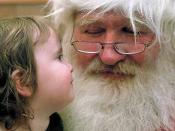The Role of Children's Literature in Primary Language Teaching
I am going to write about the role of children's literature in primary language teaching, the role of the storybooks in primary language teaching and I am going to design a scheme of work for three lessons which is attached to the storybook entitled 'The Elephant and the Bad Baby' (Vipont, E.-1995) in this essay.
Children's literature is part of the literature which speaks to children. Rhymes, songs, poems, tales and stories belong to children's literature.
Short, interesting and fun rhymes and songs kindle children's interest. Rhymes and songs usually rhyme well and the languages of the rhymes and songs are easy and simple therefore children can acquire them easily and it gives children a real sense of achievement. Songs and rhymes provide a natural repetition and children can improve their pronunciation. Songs and rhymes reinforce the rhythm of the English language.
Children turn the leaves of the books with pleasure which contain rhymes and songs, because there are many colourful and beautiful pictures in these books and they arouse children's interest. Songs and rhymes develop the four language skills. Teachers can use them any time during the lesson (as a warm up, as a main activity, as a transition between two activities, as an introduction a topic or as a close up). This is something that children can take out of the classroom.
Poems are also important in primary language teaching. The history of the children's poetry is simultaneous with the history of humanity. Poetry is a bit magic. Children responsive to poetry. The first "poem experience" - (lullabies and sing-song) - goes children longer and it depends on adults that how far the poetry enriches children's intimate world. Children like poems very much, mainly festive poems, like...


